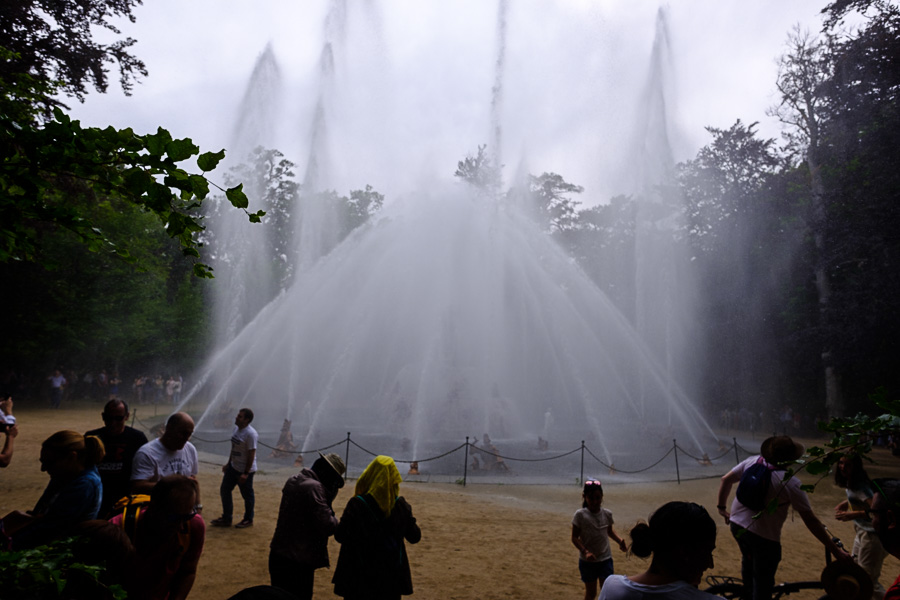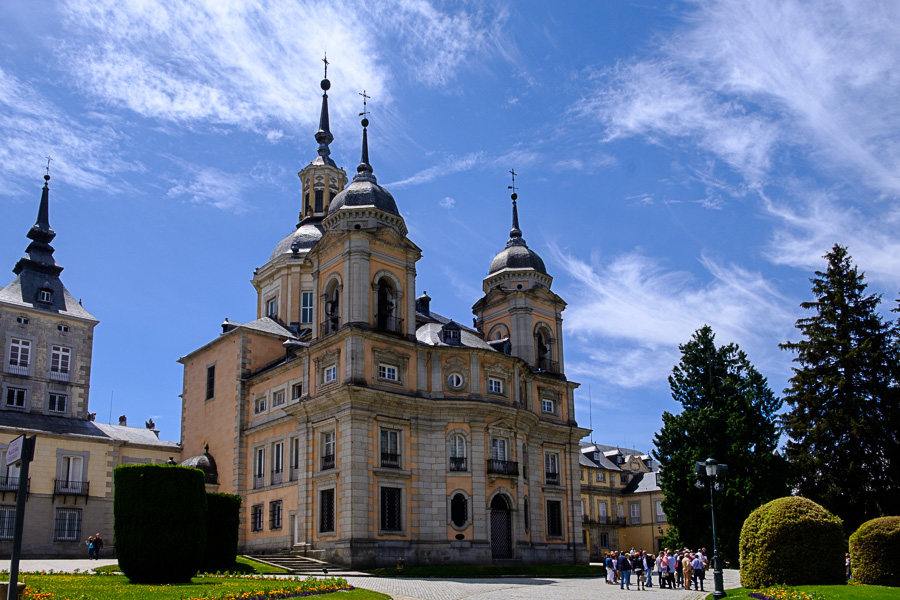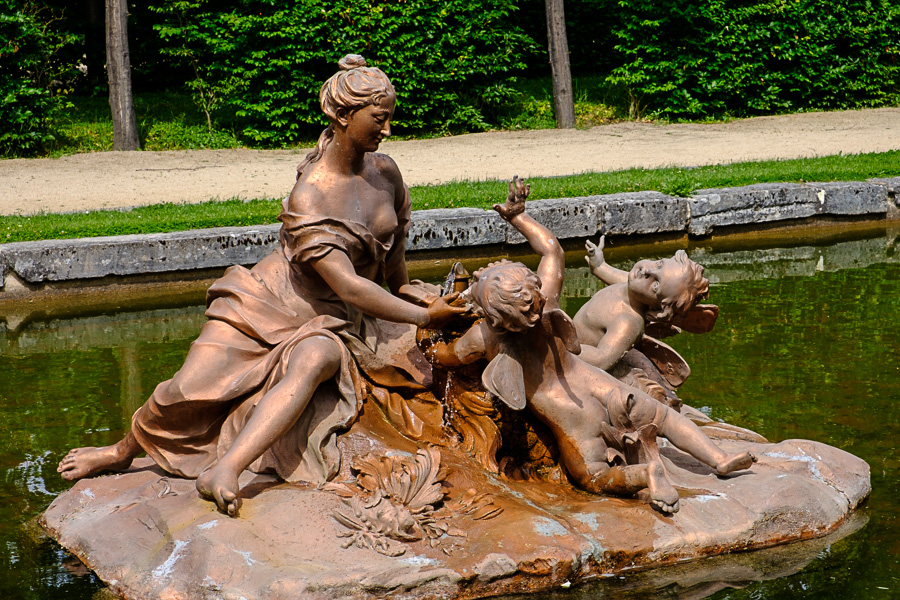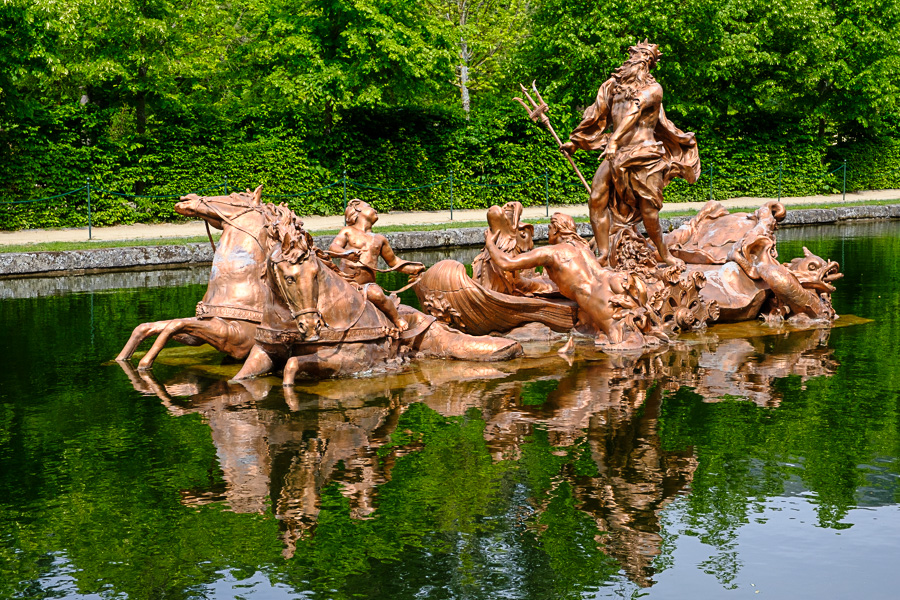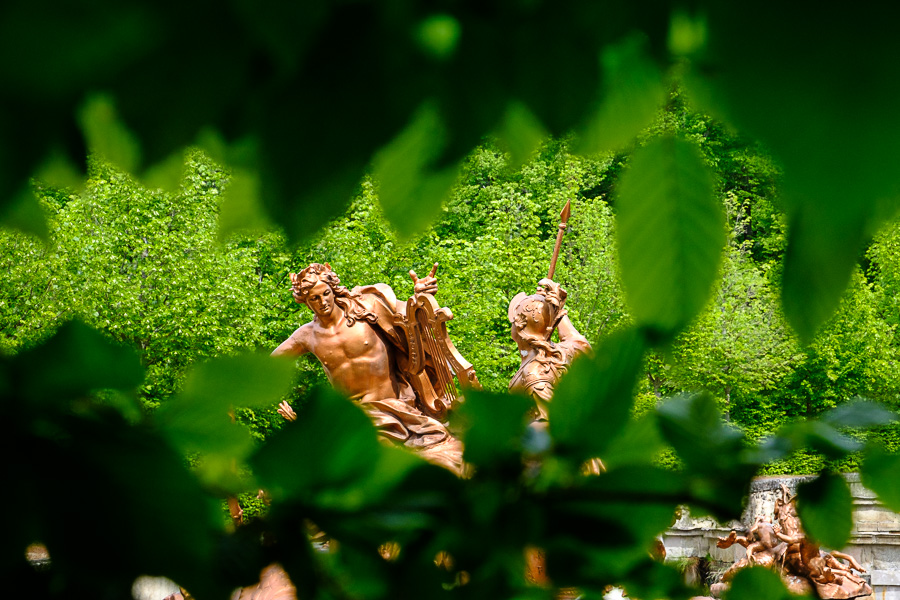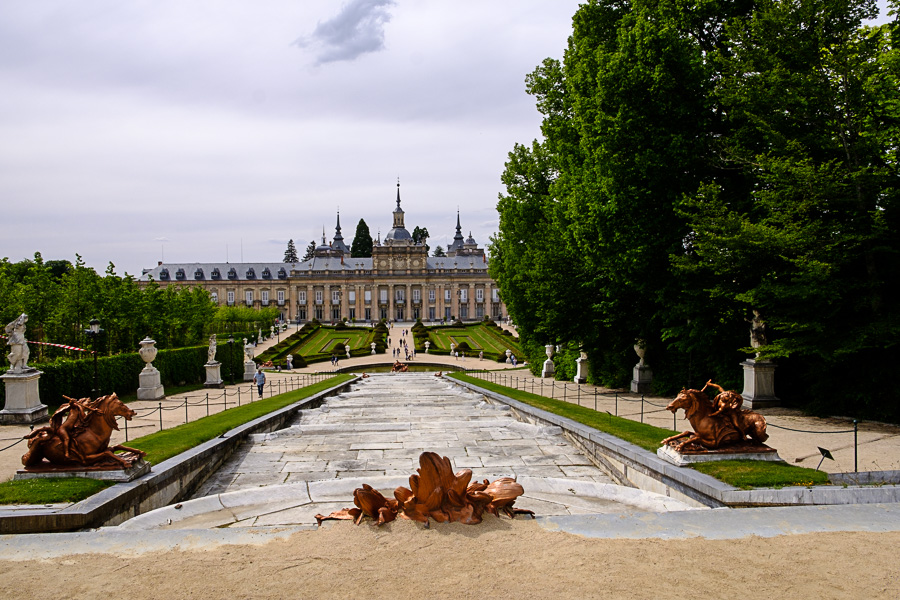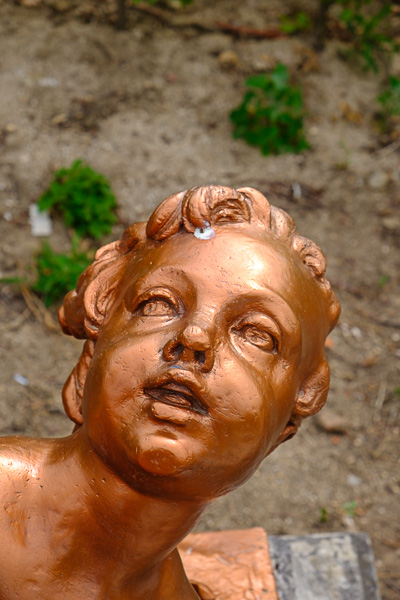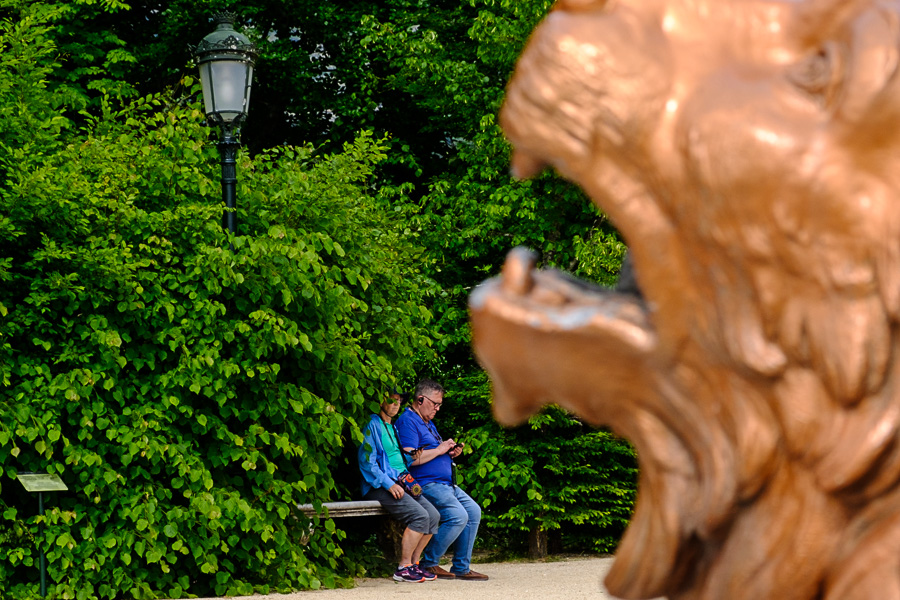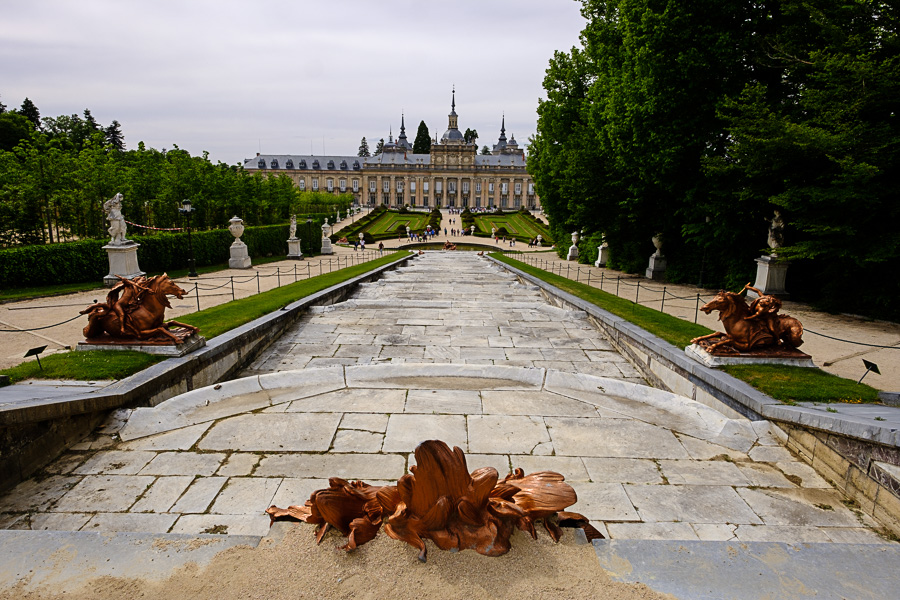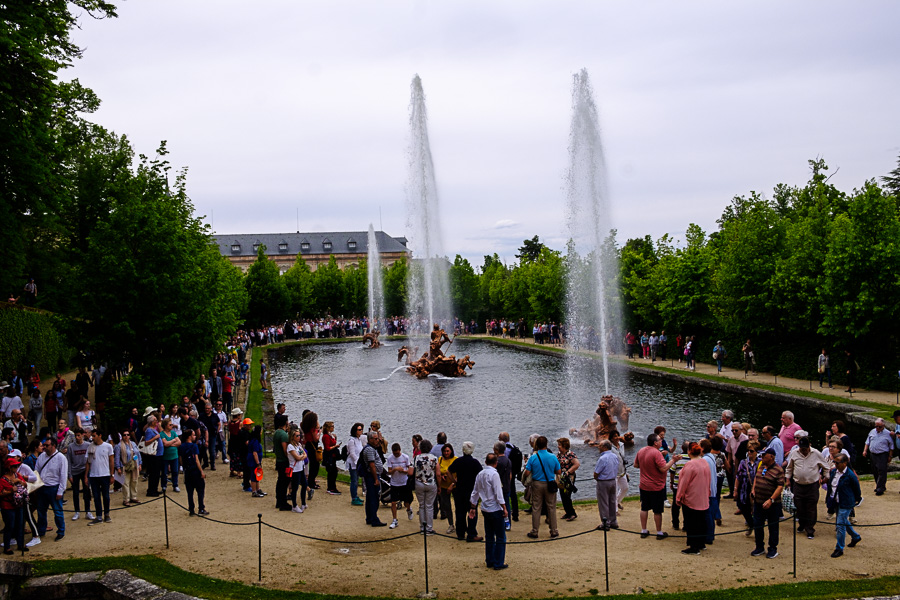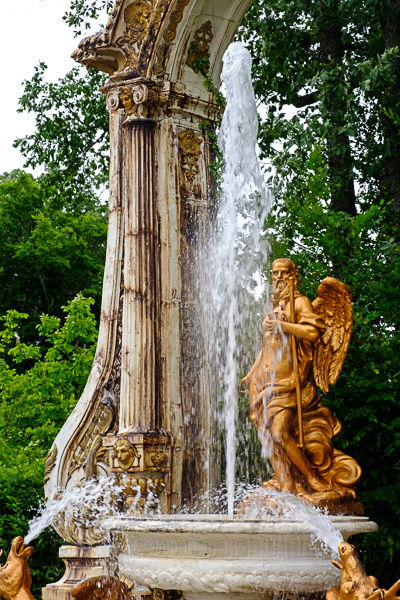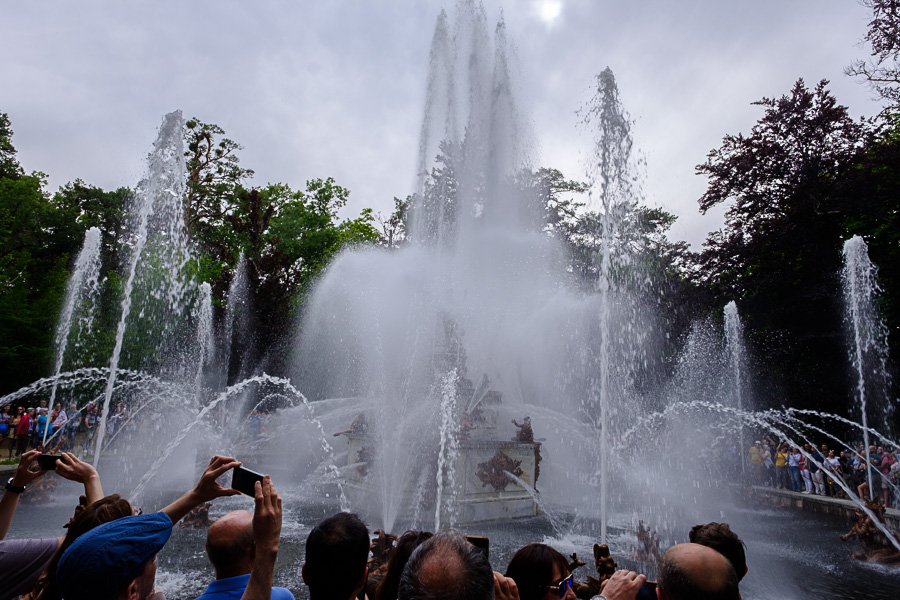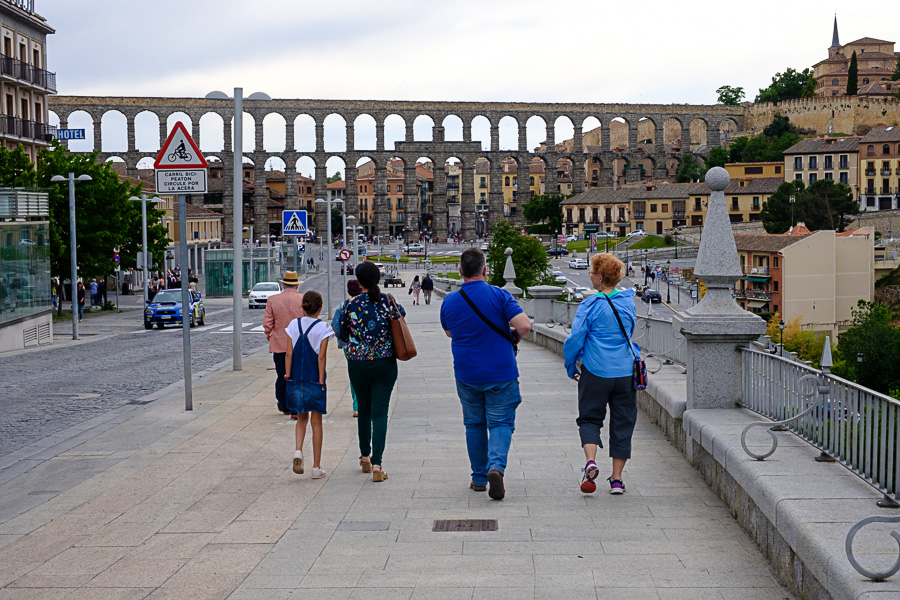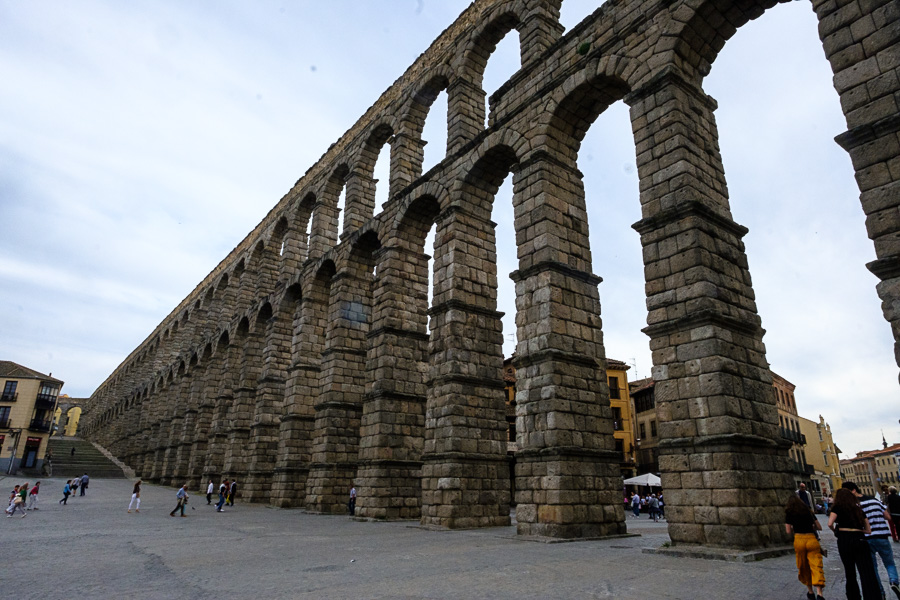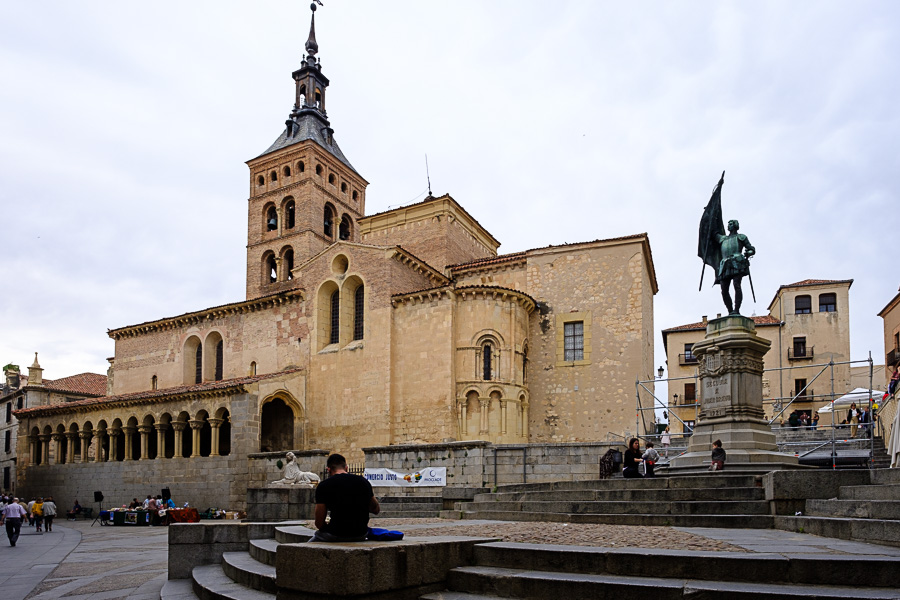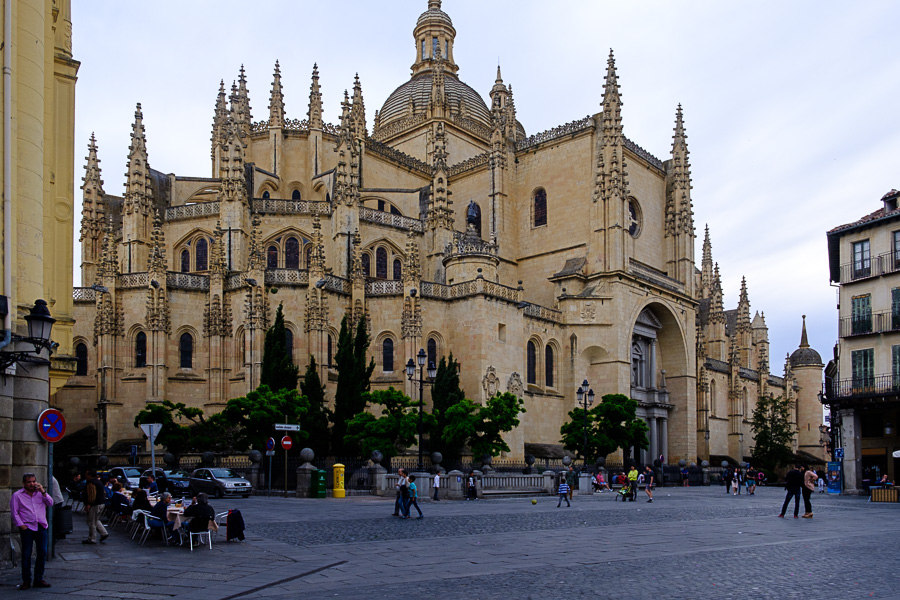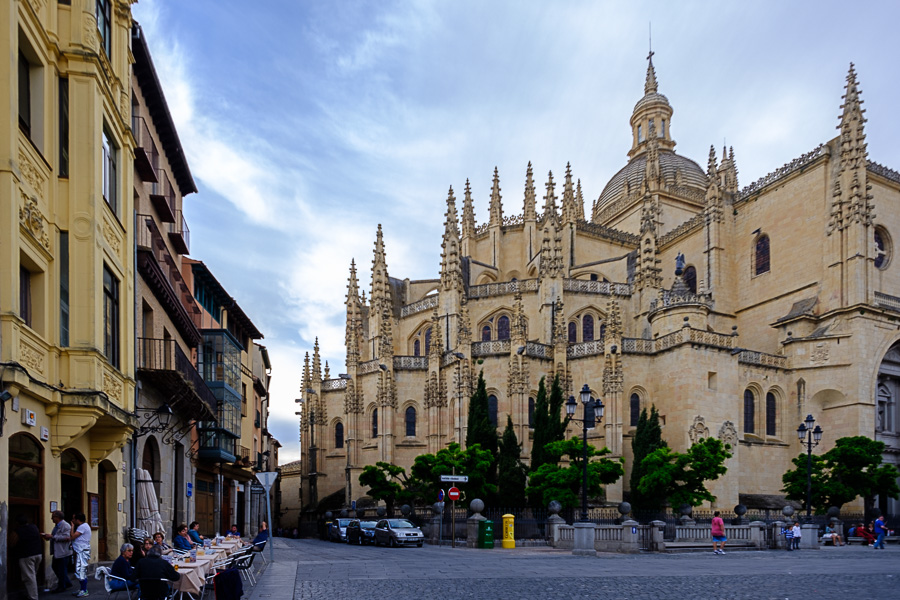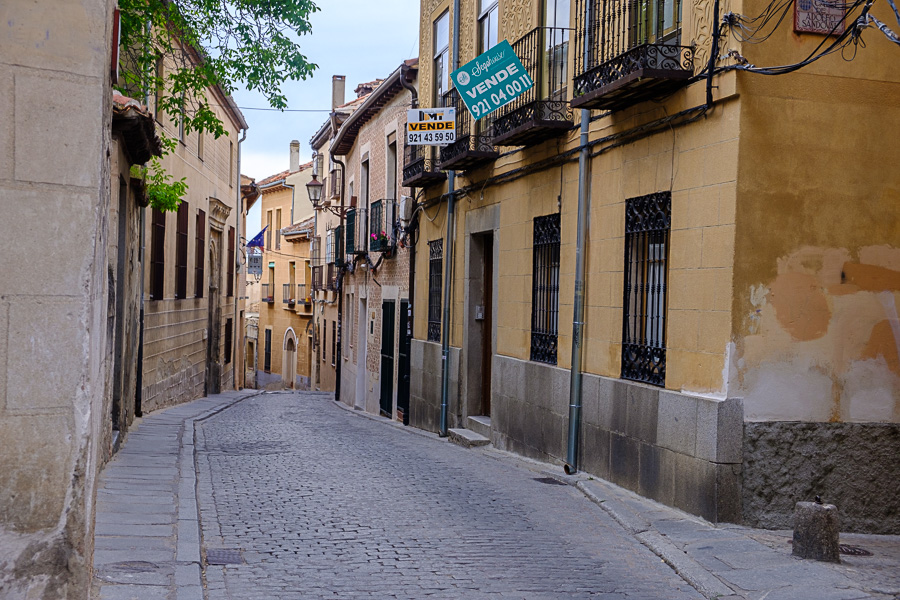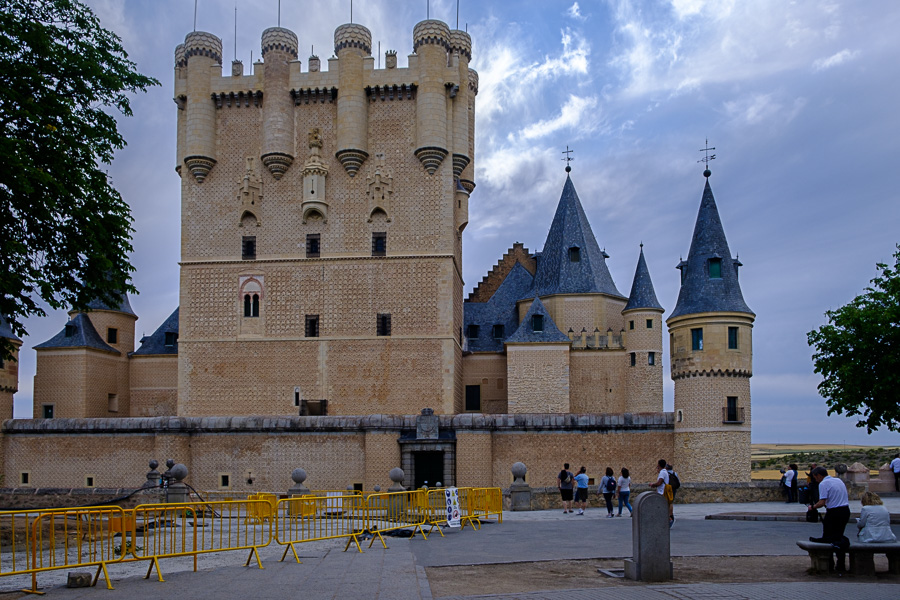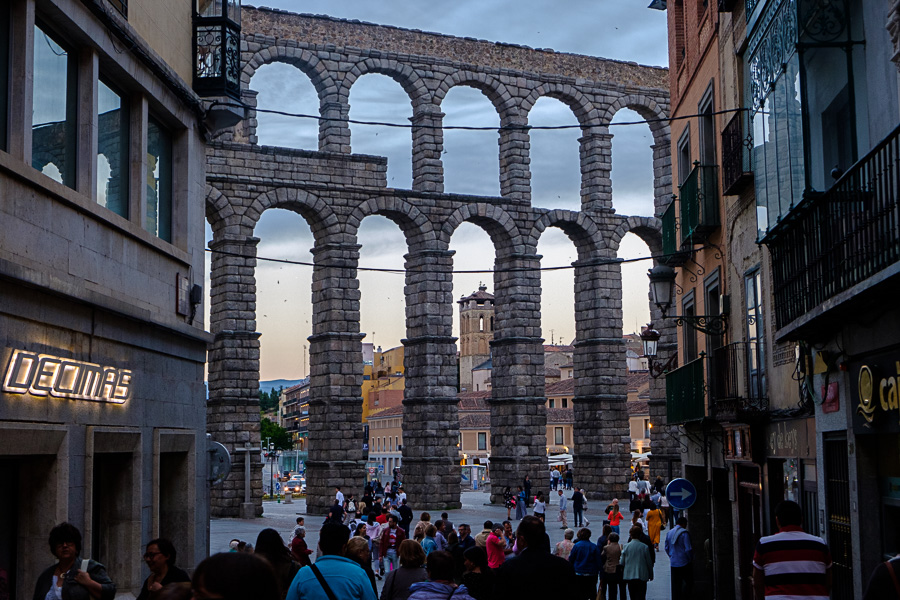Who needs Netflix? Certainly none of King Philip V’s household. Philip and his family could binge on any one of the Greek and Roman mythological stories represented in allegorical form through numerous painting, sculptures and tapestries scattered around his hunting lodge at San Granja San Ildefonso. That was our first stop on a busy day in and around Segovia.
A little historical background. You remember the War of Spanish Succession from high school history, don’t you? No? Me neither. Here’s a quick refresher. Spain’s golden years occurred under the role of the Hapsburgs. The first Hapsburg, King Charles I, became king of Spain in 1516, aka Holy Roman Emperor Charles V, and was THE man in Europe. From then on, the 16thand 17thcenturies were marked by conquests in South America (Incas, Aztecs and Mayans) and the related extraction of gold and silver. It was also a cultural golden era: Velazquez, El Greco, Cervantes’ Don Quixote and so on.
Things were on the decline (too many wars, too little tax revenue, weak kings) when the last Hapsburg, Charles II, died in 1700. His biggest boo-boo: he didn’t leave an heir. The chair was open and everyone wanted to fill it. For reasons that escape me, France and Spain fought an alliance of England, Portugal, Netherlands and assorted others. It lasted for 14 years. France lost but somehow France’s Louis XIV (the “Sun King”) had his grandson crowned as King Philip V. My sense is that Philip ruled fairly successfully from 1714 until January of 1724. Philip then said, “You know, this king thing’s been great but I’m getting on in years and I’d really like to retire to my hunting lodge up at San Ildefonso. I hereby abdicate in favor of my eldest son (by my first marriage).” Unfortunately for all involved, the son died in September and Philip had to climb back onto the throne. He kept going until his death on July 9, 1746, just 226 years to the day before Judy and I were married. The rest of the Bourbon dynasty is, to me, a blur and for today’s adventure has no relevance.
Philip and his second wife didn’t give up on the idea of spending at least the summers up in the hills of San Ildefonso and they continued to fix the place up to become the palace we toured today. It’s about an hour and a bit from Enrique’s place to the palace. Once there, we rented a really nice audio/visual guide (ear piece plus a tablet with pictures) and toured the interior of the palace. Fortunately for all involved, they wouldn’t let me take pictures, so I’m spared processing the files and you’re spared from having to view them. We also toured the attached chapel, which is an amazing piece of architecture and interior decoration in its own right.
After, around 2 PM, we broke for a traditional Spanish lunch: the big meal of the day. We found a nice little restaurant and had a first course (mine was a bean soup; Judy and Enrique had some other traditional soup); a second course (ham and pork with potatoes), bread, wine/beer/coke plus bread and dessert for 40 Euros. Not a bad deal for a great lunch.
After lunch we toured the external gardens. Philip, as Louis XIV’s grandson, had grown up playing at Versailles and Louis’ various other palaces, so he had a good idea what he wanted to do at San Ildefonso. While vaguely patterned after Versailles it reminded me more of Russia’s Peterhof with an amazing array of fountains surrounded by peaceful and shade-providing woods. At 5:30 PM they fired up first one, then another and eventually four different fountain complexes. We, along with hundreds of other visitors, trouped from one to the next, covering hundreds of meters between each.
Philip’s second wife, Isabel de Farnasio is an interesting character in her own right. She was from Parma, Italy. Her marriage, by proxy was arranged to bring Italian interests to Spain and because her handlers thought she was simple and hence easy to control. Not so; she apparently exerted great control during Philip’s reign. Together they decorated the palace with the dazzling array of artwork I mentioned earlier. And as I mentioned yesterday, much of the artwork is slanted in such a way that it reflects favorably on the king and his queen.
For instance, in one room there are eight statues of Diana’s nymphs. “But wait,” you say, “I thought Diana had nine nymphs.” Yeah right, I didn’t have a clue either until the audio guide explained it. Isabel would seat herself in front of the eight statues, thereby becoming the ninth nymphs. Doesn’t that beat binge streaming Game of Thrones?
A fountain display outdoors depicted what is, according to the Greeks, the three characteristics of ideal beauty: Affability, Joy and Charm who happen to be the daughters of Zeus.
By now it’s 7:30 PM or so and we’re off to Segovia, just 15 minutes away. I don’t have all the historical facts, but I can tell you that Segovia is one amazing and amazingly beautiful city.
The first thing that smacks you between the eyes is the amazing Roman Aqueduct, a 17-mile-long construction that provided water to Segovia into the 18thcentury. It was patched up once by Ferdinand and Isabella and again in the 16thcentury, but there it stands today. I’ll let the pictures do the talking.
Segovia has a beautiful cathedral (mid 16thcentury) and a very nice-looking castle (called the “Disneyland Castle” by some), dating from 1120. Enrique says it isn’t as grand inside as San Ildefonso. We didn’t go into either one.
We grabbed a bag of churros and headed back to town where Enrique put on the traditional Spanish supper: Spanish tortillas (scrambled eggs with potatoes and onions mixed in – looks like a pie), sausage, cheese and bread. That ought to hold us until morning.
We have a walking tour scheduled in downtown Madrid at 10:45. We’ll see where we go after that.
And guess what? Tomorrow is our last touring day. We fly back on Monday. If it weren’t for those four grandkids, we (I at least) would stay and keep on touring. Maybe I’d just settle down and continue eating; touring is secondary!


